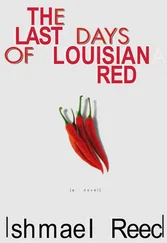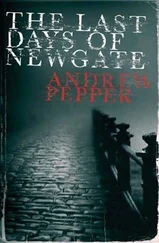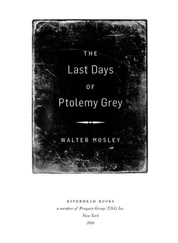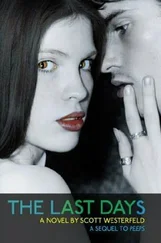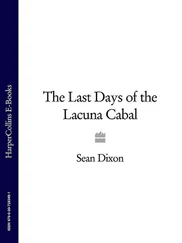such prim Delvaux bones … prone Mallo skeletons:Manifs from the work of Belgian artist Paul Delvaux seem to be relatively common in New Paris, in particular skeletons such as those described here, to which, if not as obsessively as he did his big-eyed nude women, he repeatedly returned. To quote the title of his 1941 image, the whole of New Paris could be considered “la ville inquiète” —the worried, apprehensive, anxious, unquiet city. The uneasy city. A city also inhabited by other, fitting, trembling bone figures, ripping themselves apart as they lie shaking, reconstructing themselves repeatedly. They are manifest from Maruja Mallo’s 1930 Antro de fósiles—Den of Fossils.
The Musée de l’Armée is being emptied … by curious undergrowth:Paul Eluard’s idea, from Le Surréalisme au service de la révolution number 6 in 1933, has clearly manifested. The “irrational embellishment” he suggested for Les Invalides was that the area “be replaced by an aspen forest.”
“They’re called wolf-tables … Manifest from an imagining by a man called Brauner.”:The most famous iteration of the “loup-table,” the “wolf-table,” of the Romanian artist Victor Brauner, was the physical object itself that he made, in our reality, in 1947. Whether or not he physically made it in that of Thibaut, too, I don’t know, but he had imagined the furniture-beast at least twice before the S-Blast, in his 1939 paintings Psychological Space and Fascination, which Thibaut appeared to know. As Thibaut mentions, in both these earlier renderings, as in the later sculpture, the predator’s snarling head—“screaming over its shoulder at death,” as Breton put it—and tail and ostentatious scrotum appear more vulpine than lupine. Breton considered Brauner’s wolf-table to be a uniquely sensitive tapping of fear, of anticipation of the war to come.
a barnacled book:Initially I presumed that the “book that has rested underwater” was Prospero’s grimoire, but in later conversation Thibaut corrected me: it is the manif of a 1936 object made by Leonor Fini.
a spoon covered with fur:The spoon that Thibaut half expected to find often accompanies a similarly furred cup, he said, and is of course manifest from Meret Oppenheim’s famous assemblage, sometimes known as Breakfast in Fur. A reasonable minority of the spoons left in New Paris are, apparently, now furred.
“‘Those who are asleep … are workers and collaborators in what goes on in the universe.’”: Géographie nocturne ’s opening line, which Thibaut quoted, is from Herakleitos. It, along with La Main à plume, was printed in 1941.
“Ithell Colquhoun?”:Colquhoun, in our reality, was an unusual and minor artist who had been expelled from the London Surrealist Group in 1940. She retained a lifelong fascination for the occult, particularly Kabbala, and was a member of various magically inclined orders and groups over the years. She was later the author of the odd hermetic novel Goose of Hermogenes.
“‘Confusedly … forests mingle with legendary creatures hidden in the thickets.’”:Robert Desnos’s description of the forest dates from 1926, from the piece “Sleep Spaces.”
those rushing futurist plane-presences:Launched with a manifesto in 1929, “aeropittura” —“aeropainting”—was a heavily fascist-influenced iteration of second-generation futurism in Italy. It was associated with Benedetta Cappa, Enrico Prampolini, “Tato” (Guglielmo Sansoni), Fortunato Depero, Fillia and Tullio Crali. It offered its quasi-abstraction in breathless service to imagined speed and bombastic propaganda, and to quasi-religious fascist iconography, such as Gerardo Dottori’s 1933 portrait of Mussolini, Il Duce. It was the frenetic angular plane-presences of aeropittura that appear to have manifested occasionally in New Paris.
“Fauves? … The negligible old star?”:The fauvism of André Derain, referenced here, was tolerated and, to a degree, celebrated in the Vichy regime. New Paris is home to a few too-bright figures walked vaguely from his images. A short and elliptical six-line poem by Gertrude Stein gives its name—and, in New Paris, its unpleasant manifest quiddity—to the manif known as the negligible old star.
A giant’s pissoir:It was Paul Éluard, in 1933, in the collective discussion on the “irrational embellishment” of Paris, who suggested the transmogrification of the Arc de Triomphe into a urinal.
a great sickle-headed fish … a woman made up of outsized pebbles:The fish with its huge orange crescent head was one of many manifs emerged from the vivid monsters of Wilfredo Lam. The figure of the stone woman cropped up more than once in Thibaut’s testimony. He sketched it for me, and it was from that that I was able eventually to identify the manif as Meret Oppenheim’s 1938 painting Stone Woman. And there is, indeed, something particularly arresting about the simple image, even among so much strangeness. I’m not able to express exactly what it is. But I think it may lie in the fact that because we have heard, many times, in fairy tales, of people being turned to stone, and because we’ve seen statues, we know what we think something called a “stone woman” must look like. But Oppenheim’s reclining, resting woman is composed instead, jarringly, of a handful of loosely coagulated pebbles. We sense their tactility, we know how they will fit in our hands. But the chop of the water at her ankles shows that the woman is appropriately tall, and that these carefully rendered smooth stones are wildly out of scale. That problematic of scale, as much as the fact that the woman is rock, is what is so jarring.
the Palais Garnier, its stairs dinosaur bones:Breton’s suggestion for the “irrational embellishment” of Palais Garnier, the opera house, was that it become a perfume fountain, and that its staircase be reconstructed “in the bones of prehistoric animals.”
Le Chabanais:The extraordinary and macabre fate of Le Chabanais is manifest from Tristan Tzara’s proposed “embellishment” of 1933. Of the famous brothel, he demands, “[f]ill it with transparent lava and after solidification demolish the outside walls.” This, horrifyingly, is what has occurred in New Paris, setting around all those within. They are frozen, suspended, staring and unrotting in eternal surprise, like insects in amber.
A vegetal puppet, stringy, composite floral thing:The vegetal puppets are manifs from a 1938 work of that name by the Spanish-Mexican anarchist and artist Remedios Varo. Twisted, anguished, fibrous and sliding figures against a dark background, here and there they wear faint traces of human features visible.
Celebes:Max Ernst’s 1921 painting, Celebes, or The Elephant Celebes, is one of the most celebrated and instantly recognizable works in the Surrealist canon. The vast actualization of it—a strange, terrifying quasirobot elephant, derived in shape from an image Ernst once saw of a Sudanese corn bin—has become one of the most well-known in New Paris. It leaves a trail on its wanderings through the city, Thibaut told me. Where it stops to rest it leaves pools of sticky yellow grease.
The sun over Paris isn’t an empty-hearted ring:The “sol niger,” the black sun, sometimes with a hole at its core, is an image borrowed from alchemy and popular with the Surrealists. Max Ernst painted it repeatedly, as part of his “forest” works, in the 1920s.
Читать дальше

